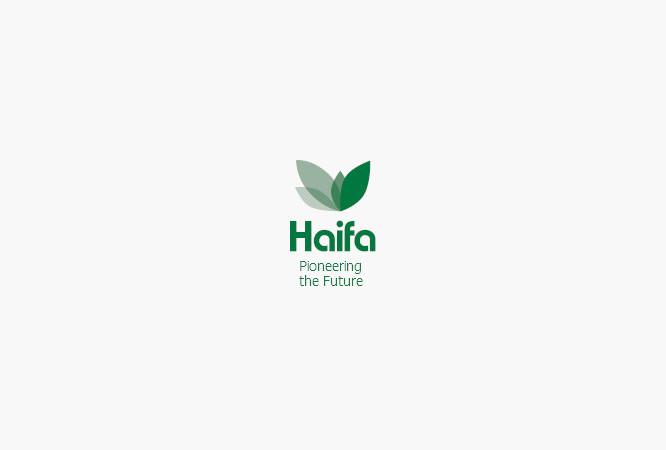Pepper is a versatile crop grown worldwide in diverse environments, from open fields to soilless greenhouses. The crop’s adaptability necessitates adjusting fertilization to match specific growth conditions.
Soil Requirements
Pepper plants thrive in light soils such as sandy loam or loam that are well-drained and rich in organic matter. The ideal soil pH range is 6.5 to 7.5.
Peppers are susceptible to soil-borne diseases caused by fungi, viruses, or bacteria. To mitigate this risk, avoid planting peppers on plots that have recently grown sensitive crops such as tomatoes, eggplants, Irish potatoes, sweet potatoes, cotton, soybeans, and others.
Pepper Growth Stages
Pepper growth can be divided into four general stages, each with unique nutritional needs and corresponding fertilization regimes:
- Vegetative growth: From planting or seeding to first flowering.
- Flowering: From first flowering to fruit set.
- Fruit ripening: From fruit set to the first harvest.
- Harvesting: From the first to the last harvest.
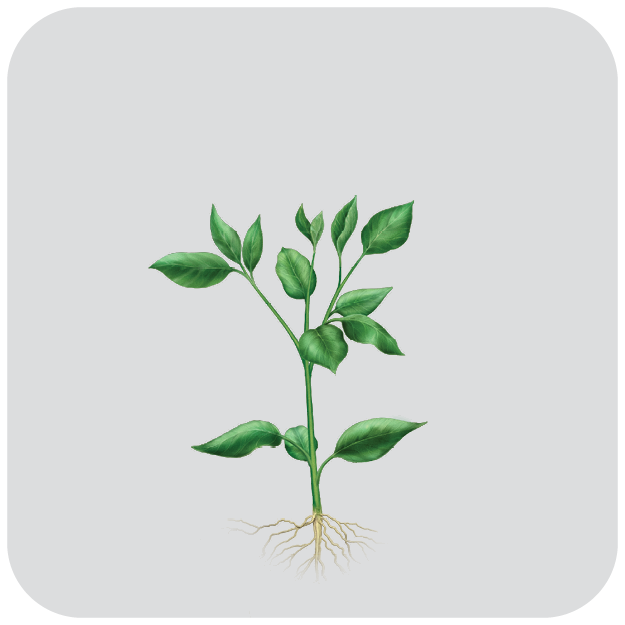 | 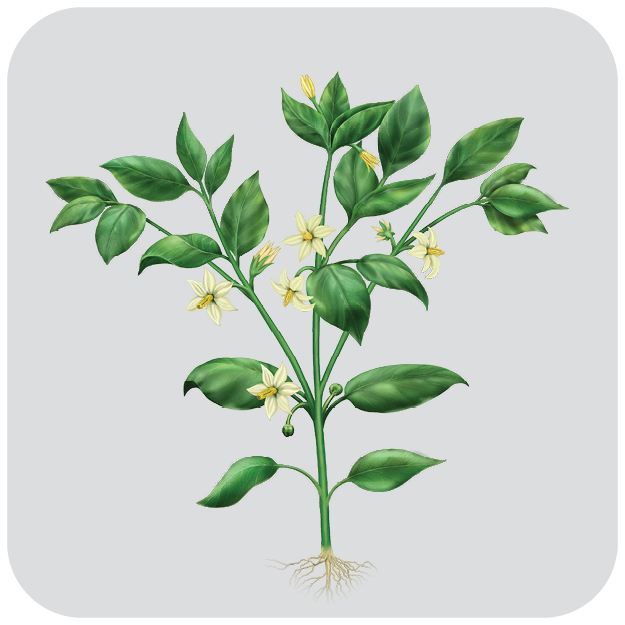 | 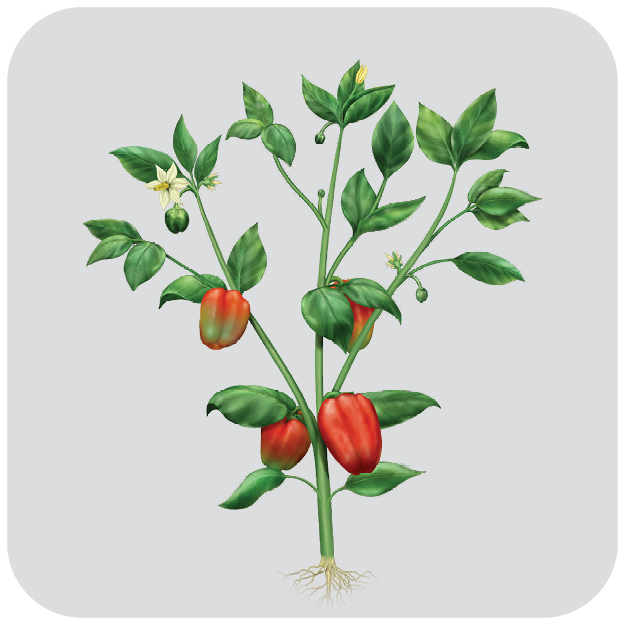 | 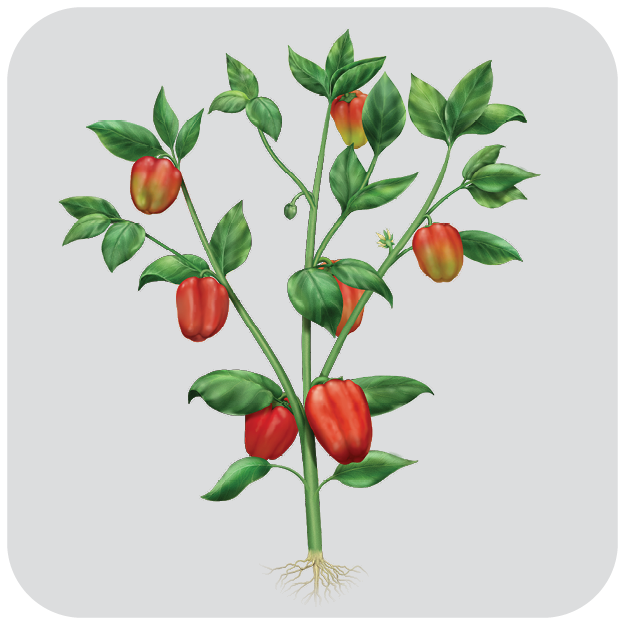 |
The duration of each stage varies depending on the growing method, variety, and climatic conditions.
An example of various growth stages durations:
Location: Central Israel
Variety: Maor
Growing method: Greenhouse
| Growth stage | Planting | Vegetative | Flowering | Fruit set | 1st Harvest | Harvest to Last Harvest |
| Days from planting | 1 | 2-24 | 25-35 | 36-45 | 46-70 | 71-240 |
Desirable temperatures
The table below shows optimal temperatures for pepper plants by growth stage.
Growth stage | Temperature (oC) | ||
Minimum | Maximum | Optimal | |
Germination | 13 | 40 | 20-25 |
Vegetative growth | 15 | 32 | Day: 20-25 |
Flowering and fruiting | 18 | 35 | Day: 26-28 |

Irrigation
Greenhouse-grown peppers benefit from a longer growing season compared to those cultivated in open fields. As a result, they consume larger amounts of water during equivalent growth stages.
Proper irrigation is essential, as both water stress and excessive irrigation can harm pepper plants.
Water Stress reduces leaf number, total leaf area, transpiration, and photosynthesis, resulting in a ~20% reduction in root density compared to adequately irrigated plants.
Excessive Irrigation leads to waterlogging, root death due to anaerobic soil conditions, delayed flowering, and fruit disorders.
The pepper root system consists of a deep taproot with laterally spreading branches about 50 cm long, along with adventitious roots. Therefore, a drip irrigation system equipped with a Nutrigation™ (fertigation) device is highly advisable to maintain optimal soil moisture and nutrient delivery.
Salinity Management
Under saline conditions, sodium cations compete with potassium for uptake sites in roots, and chloride competes with nitrate-nitrogen, reducing yield. Potassium deficiency often results in fewer fruits per plant.
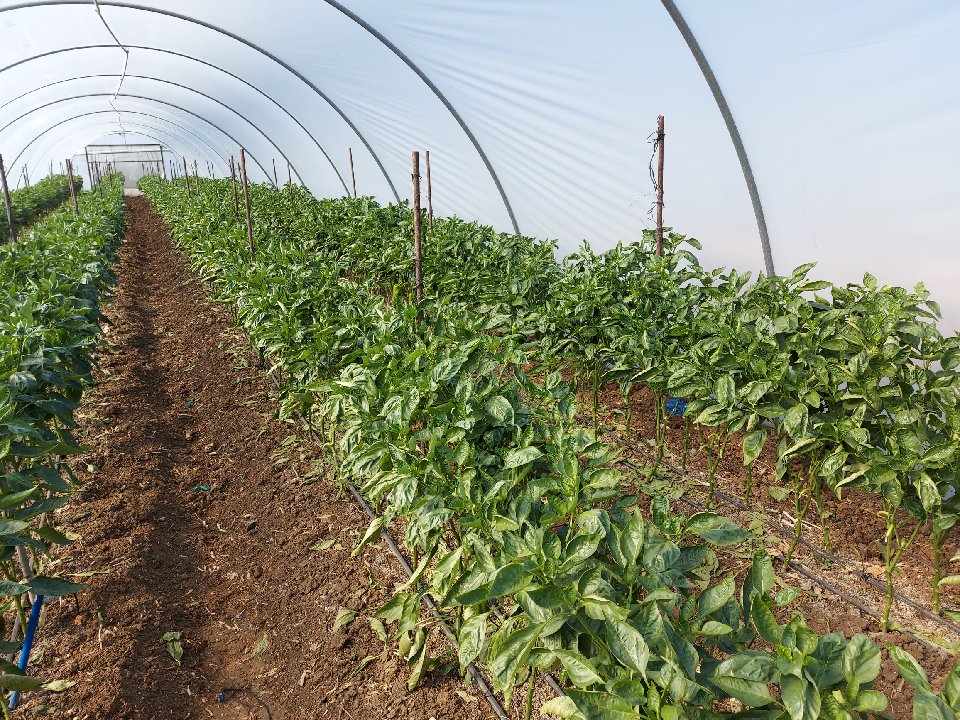
Corrective measures:
Apply abundant potassium: Potassium competes effectively with sodium, mitigating its adverse effects.
Apply abundant nitrate: Nitrate reduces chloride uptake, minimizing its harmful effects.
Provide sufficient calcium: Calcium suppresses sodium uptake, promoting potassium absorption.
Add zinc: Zinc enhances salt resistance in pepper plants.

Need more information about growing peppers? You can always return to the pepper fertilizer & pepper crop guide table of contents




